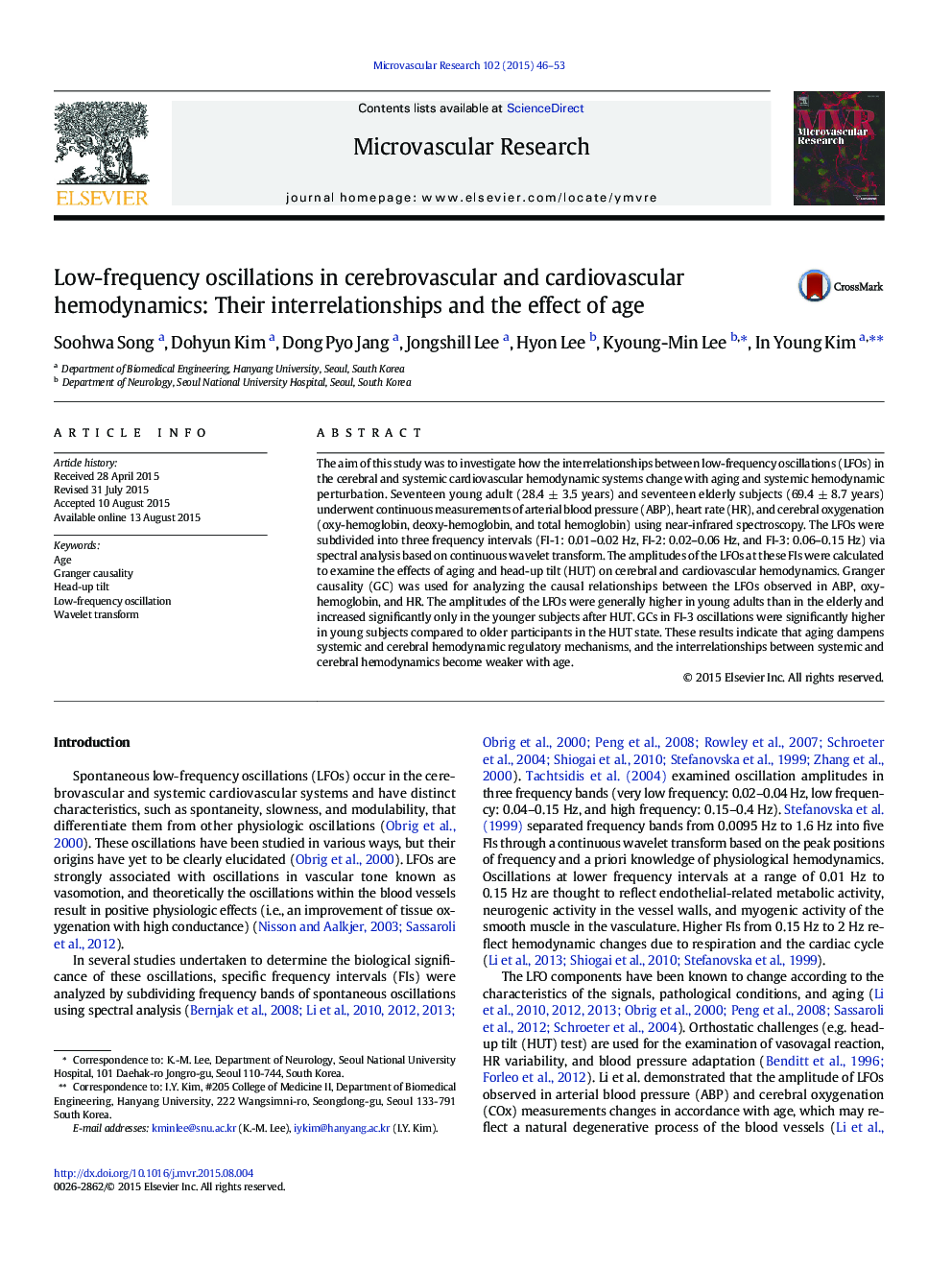| Article ID | Journal | Published Year | Pages | File Type |
|---|---|---|---|---|
| 1994710 | Microvascular Research | 2015 | 8 Pages |
•We analyzed the effects of aging and head-up tilt on LFOs in hemodynamic signals.•Cerebral oxygenation (NIRS), ABP and HR signals were measured simultaneously.•The amplitudes of LFOs were increased after HUT test only in young subjects.•Interrelationships of LFO components were increased after HUT only in young subjects.
The aim of this study was to investigate how the interrelationships between low-frequency oscillations (LFOs) in the cerebral and systemic cardiovascular hemodynamic systems change with aging and systemic hemodynamic perturbation. Seventeen young adult (28.4 ± 3.5 years) and seventeen elderly subjects (69.4 ± 8.7 years) underwent continuous measurements of arterial blood pressure (ABP), heart rate (HR), and cerebral oxygenation (oxy-hemoglobin, deoxy-hemoglobin, and total hemoglobin) using near-infrared spectroscopy. The LFOs were subdivided into three frequency intervals (FI-1: 0.01–0.02 Hz, FI-2: 0.02–0.06 Hz, and FI-3: 0.06–0.15 Hz) via spectral analysis based on continuous wavelet transform. The amplitudes of the LFOs at these FIs were calculated to examine the effects of aging and head-up tilt (HUT) on cerebral and cardiovascular hemodynamics. Granger causality (GC) was used for analyzing the causal relationships between the LFOs observed in ABP, oxy-hemoglobin, and HR. The amplitudes of the LFOs were generally higher in young adults than in the elderly and increased significantly only in the younger subjects after HUT. GCs in FI-3 oscillations were significantly higher in young subjects compared to older participants in the HUT state. These results indicate that aging dampens systemic and cerebral hemodynamic regulatory mechanisms, and the interrelationships between systemic and cerebral hemodynamics become weaker with age.
